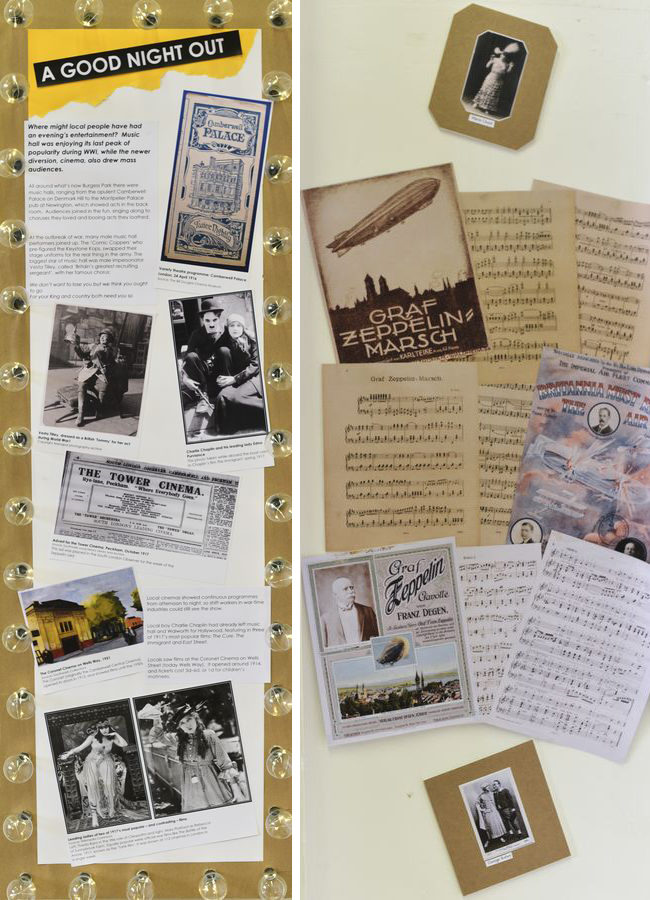Where might local people have had an evening’s entertainment? Music hall was enjoying its last peak of popularity during WWI, while the newer diversion, cinema, also drew mass audiences.

All around what’s now Burgess Park there were music halls, ranging from the opulent Camberwell Palace on Denmark Hill to the Montpelier Palace pub at Newington, which showed acts in the back room. Audiences joined in the fun, singing along to choruses they loved and booing acts they loathed.
At the outbreak of war, many male music hall performers joined up. The ‘Comic Coppers’ who pre-figured the Keystone Kops, swapped their stage uniforms for the real thing in the army. The biggest star of music hall was male impersonator Vesta Tilley, called ‘Britain’s greatest recruiting sergeant’, with her famous chorus:
We don’t want to lose you but we think you ought to go For your King and country both need you so
Local cinemas showed continuous programmes from afternoon to night, so shift workers in war-time industries could still see the show.
Local boy Charlie Chaplin had already left music hall and Walworth for Hollywood, featuring in three of 1917’s most popular films: The Cure, The Immigrant and East Street.
Locals saw films at the Coronet Cinema on Wells Street (today Wells Way). It opened around 1914, and tickets cost 3d–6d, or 1d for children’s matinees.
The Coronet (originally the Camberwell Central Cinema) opened its doors in 1913, and showed films until the 1940s.
Also check out our page on Burgess Park Pubs
